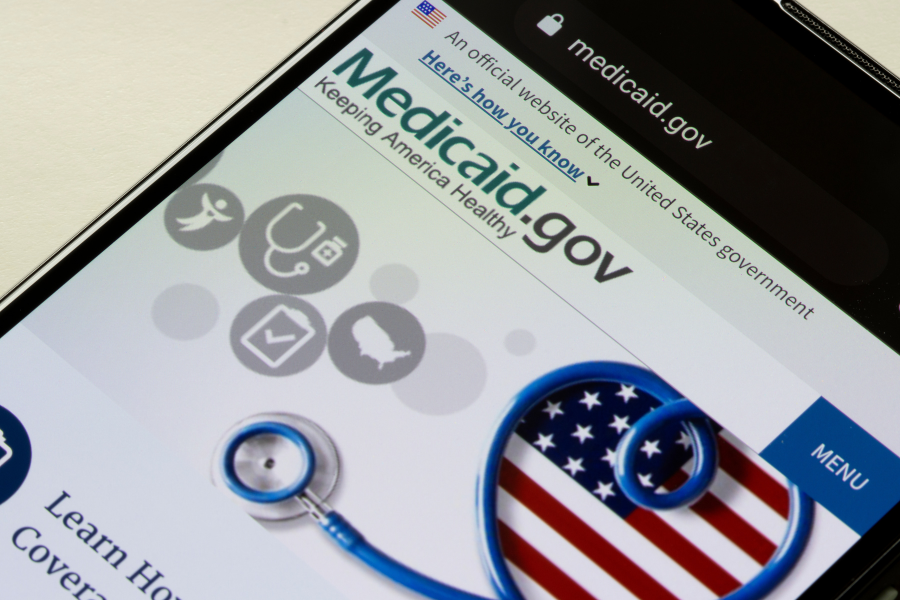KFF Health News examines the state-by-state data related to a significant decrease in Medicaid and CHIP enrollment since April 2023 – a process referred to as “unwinding.” While enrollment numbers for these programs have historically fluctuated, the recent drop has been both swift and dramatic for a variety of reasons, and has affected some states more profoundly than others.
Analysis
Medicaid and the Children’s Health Insurance Program (CHIP) were established to provide insurance relief to Americans with low income or those who have disabilities. Amidst the public health emergency of the COVID-19 pandemic, the federal government instituted a continuous coverage provision that prohibited states from withdrawing Medicaid coverage for any reason. When this provision expired last April, the unwinding process began, and the federal government has given the majority of states 12 months to complete their reviews and reconciliation of their coverage lists.
Loss of Medicaid/CHIP coverage tends to occur either due to an individual’s income rising above the eligibility threshold or due to what are called “procedural” reasons, such as failure to heed renewal notices or provide necessary paperwork. Prior to the pandemic, approximately 1-1.5 million individuals would lose coverage, including those who remained qualified but had neglected to complete their renewal applications. During the unwinding, this rate has increased rapidly, meaning more Americans are losing coverage more quickly.
However, one important point–raised by health economist Timothy McBride–is that the nation’s low unemployment rate is also contributing to the drop in Medicaid/CHIP enrollment. Many of those who are no longer involved in the program have switched to employer-provided health insurance or found policies in the Affordable Care Act marketplaces.
Key Points
- During the pandemic, the number of Medicaid and CHIP enrollees rose to a record high of 94 million beneficiaries.
- More than 16 million people have had their coverage reviewed and been removed from state lists since April 2023. At least 3.8 million children have also lost coverage.
- Despite new enrollment, the net result of the unwinding thus far has been a 9.5 million person decrease in overall coverage, at a rate that will likely lead to the pre-pandemic levels of 71 million enrollees.
- Initial government predictions stated that the unwinding would cause 15 million people to lose coverage, half due to procedural issues. These predictions turned out to be low. Data currently shows disenrollment may exceed 17 million, with 70% due to procedural issues.
- Two-thirds of the 48 million enrollees whose coverage eligibility has undergone review have had their coverage renewed, while one-third have not.
State-by-State Data
Variances in state rules for Medicaid and CHIP eligibility, communication strategies regarding enrollment process, survey methodology, and other factors have produced a wide range of data across different states. The KFF report takes a closer look at four of these:
Oregon
Oregon’s state laws include a provision allowing children under the age of six to remain covered without re-applying for the program, and also offer two years of coverage for all Oregonians regardless of income changes. These Medicaid/CHIP rules play a part in Oregon’s relatively low 12% rate of disenrollment, with 75% renewal and 13% still pending.
Oklahoma
Conversely, Oklahoma’s Medicaid enrollment has plummeted in the past year, with 43% of beneficiaries losing coverage, 34% being renewed, and approximately 24% pending.
Alabama
Alabama was one of ten states that opted out of Medicaid expansion under the ACA, and counted approximately 1.2 million beneficiaries in April 2023. According to health policy advocate Jennifer Harris, the state’s Medicaid agency cooperated with local non-profits to ensure that enrolled Alabamans understood the re-application requirements and had also employed additional workforce to assist as coverage numbers rose. As a result, 66% of Medicaid/CHIP beneficiaries have been renewed, and of those who lost coverage, only 29% were due to procedural reasons. Additionally, nearly 25% of those who lost coverage were re-enrolled within 90 days, and the state looks to be on track to return to its pre-pandemic levels of coverage.
Utah
KFF notes that only Utah surveyed its citizens to answer a key question–how many of those who were dropped from Medicaid or CHIP are still uninsured. The state’s survey results indicated that 30% of respondents who had lost coverage remained without, while others were now covered under employer health plans or policies purchased through the ACA marketplace.
Conclusion
The KFF Health News analysis of the data offers a multifaceted illustration of the current state of Medicaid and CHIP enrollment. The unwinding has led to an unprecedented decline in program enrollment at a much faster pace than was estimated, although this might also reflect the pandemic-era levels of high enrollment that preceded it. More study of the current data along different metrics, as well as new research to discern other causes, will be required to fully understand the scope and magnitude of the unwinding.

